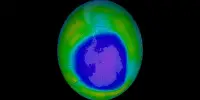According to new research published in The Lancet Planetary Health, worrying amounts of uranium and other hazardous elements can be identified in drinking water across the United States. The average quantities of uranium (a naturally radioactive element) and arsenic (a potentially dangerous heavy metal) identified in US water systems are above the maximum contamination limits set by the US Environmental Protection Agency, according to Columbia University researchers (EPA).
Contamination was found to be particularly prevalent in semi-urban regions with a large Hispanic population, according to the researchers. Arsenic, barium, chromium, selenium, and uranium concentrations were found to be alarmingly high in certain areas. The effect on human health is unknown, but the research adds that Hispanic communities face a number of health inequities, including diabetes, liver, renal, and cardiovascular disease, all of which might be connected to exposure to these chemicals.
In a statement, Anne Nigra, assistant professor of Environmental Health Sciences at Columbia Mailman School of Public Health, said, “Previous studies have found associations between chronic uranium exposure and increased risk of hypertension, cardiovascular disease, kidney damage, and lung cancer at high levels of exposure.” “Our goals were to estimate CWS metal concentrations across the United States and identify sociodemographic subgroups served by these systems who either reported high metal concentration estimates or were more likely to report averages exceeding the United States Environmental Protection Agency’s maximum contaminant level.”
According to the World Health Organization, long-term intake of inorganic arsenic is connected to developmental consequences, diabetes, lung illness, and cardiovascular disease (WHO). Skin disorders such as pigmentation changes and skin lesions can be caused by arsenic exposure. Some research shows that skin cancer may be caused by exposure. Despite the fact that uranium is radioactive, the greatest danger from swallowing it is chemical toxicity, not radiation. Over time, prolonged exposure to high quantities of uranium can harm your kidneys.
Uranium and arsenic, as frightening as they may seem, can be found in the Earth’s crust and naturally occur at low amounts in the environment. However, polluted groundwater and industrial operations can expose individuals to greater quantities of these metals. In light of this, the authors of the study claim that the constant link between high metal concentrations and specific communities indicates that their findings are most likely the result of failed regulatory policy rather than natural geology.
“In order to eliminate inequalities in CWS metal concentrations and safeguard populations supplied by public water systems with elevated metal concentrations, further regulatory policies, compliance enforcement, and enhanced infrastructure are required,” Nigra stated. “In order to achieve environmental justice and safeguard public health, such initiatives and regulations should especially protect the most vulnerable populations.”
















